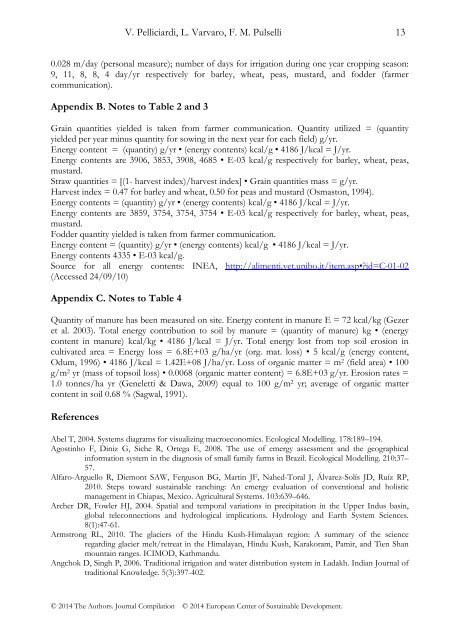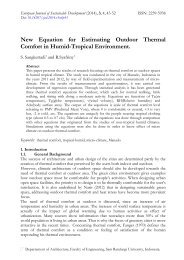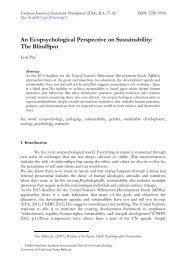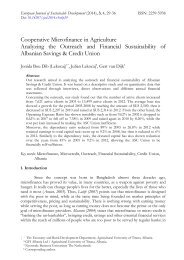Emergy evaluation of a traditional farming system. Case study: Leh District (Ladakh - Indian Trans-Himalaya)
Ladakh traditional farming system has been included on the F.A.O. list of possible “Globally Important Agricultural Heritage Systems”, worthy of being preserved and conserved. The paper describes and assesses cultivation practices in a typical familymanaged farm, located in central Ladakh, analysing how natural resources are exploited, conserved and recycled. Emergy evaluation, an environmental accounting methodology, has been applied to evaluate and compare five staple crop productions: barley, wheat, pea, mustard, and fodder alfalfa. Unit Emergy Values of products (UEV, emergy per unit product, a measure of the environmental production cost) are calculated, taking into account the inputs to production such as water from glaciers, soil fertility, human and animal labour, and more. Results show that the traditional agricultural practices in Ladakh, completely supported by renewable flows, are efficient in the use of local resources. In fact, the UEVs of agroproducts are similar to those of analogous products of conventional agriculture (e.g. 5.27E+05 and 6.64E+05 semj/J for barley and wheat in Ladakh, respectively; 7.37E+05 semj/J for corn in USA), though the inputs of Ladakh agriculture are strongly limited in type and quantity. At the same time, local farmers can create, maintain and rebuild soil functions whose UEV is 1.62E+07 semj/J. Keywords: Ladakh, agrosystem, emergy, environment, sustainability
Ladakh traditional farming system has been included on the F.A.O. list of possible “Globally Important Agricultural Heritage Systems”, worthy of being preserved and
conserved. The paper describes and assesses cultivation practices in a typical familymanaged farm, located in central Ladakh, analysing how natural resources are exploited, conserved and recycled. Emergy evaluation, an environmental accounting methodology, has been applied to evaluate and compare five staple crop productions: barley, wheat, pea, mustard, and fodder alfalfa. Unit Emergy Values of products (UEV, emergy per unit product, a measure of the environmental production cost) are calculated, taking into account the inputs to production such as water from glaciers, soil fertility, human and
animal labour, and more. Results show that the traditional agricultural practices in Ladakh,
completely supported by renewable flows, are efficient in the use of local resources. In fact, the UEVs of agroproducts are similar to those of analogous products of conventional agriculture (e.g. 5.27E+05 and 6.64E+05 semj/J for barley and wheat in Ladakh, respectively; 7.37E+05 semj/J for corn in USA), though the inputs of Ladakh agriculture are strongly limited in type and quantity. At the same time, local farmers can create, maintain and rebuild soil functions whose UEV is 1.62E+07 semj/J.
Keywords: Ladakh, agrosystem, emergy, environment, sustainability
Create successful ePaper yourself
Turn your PDF publications into a flip-book with our unique Google optimized e-Paper software.
V. Pelliciardi, L. Varvaro, F. M. Pulselli 13<br />
0.028 m/day (personal measure); number <strong>of</strong> days for irrigation during one year cropping season:<br />
9, 11, 8, 8, 4 day/yr respectively for barley, wheat, peas, mustard, and fodder (farmer<br />
communication).<br />
Appendix B. Notes to Table 2 and 3<br />
Grain quantities yielded is taken from farmer communication. Quantity utilized = (quantity<br />
yielded per year minus quantity for sowing in the next year for each field) g/yr.<br />
Energy content = (quantity) g/yr • (energy contents) kcal/g • 4186 J/kcal = J/yr.<br />
Energy contents are 3906, 3853, 3908, 4685 • E-03 kcal/g respectively for barley, wheat, peas,<br />
mustard.<br />
Straw quantities = [(1- harvest index)/harvest index] • Grain quantities mass = g/yr.<br />
Harvest index = 0.47 for barley and wheat, 0.50 for peas and mustard (Osmaston, 1994).<br />
Energy contents = (quantity) g/yr • (energy contents) kcal/g • 4186 J/kcal = J/yr.<br />
Energy contents are 3859, 3754, 3754, 3754 • E-03 kcal/g respectively for barley, wheat, peas,<br />
mustard.<br />
Fodder quantity yielded is taken from farmer communication.<br />
Energy content = (quantity) g/yr • (energy contents) kcal/g • 4186 J/kcal = J/yr.<br />
Energy contents 4335 • E-03 kcal/g.<br />
Source for all energy contents: INEA, http://alimenti.vet.unibo.it/item.asp•id=C-01-02<br />
(Accessed 24/09/10)<br />
Appendix C. Notes to Table 4<br />
Quantity <strong>of</strong> manure has been measured on site. Energy content in manure E = 72 kcal/kg (Gezer<br />
et al. 2003). Total energy contribution to soil by manure = (quantity <strong>of</strong> manure) kg • (energy<br />
content in manure) kcal/kg • 4186 J/kcal = J/yr. Total energy lost from top soil erosion in<br />
cultivated area = Energy loss = 6.8E+03 g/ha/yr (org. mat. loss) • 5 kcal/g (energy content,<br />
Odum, 1996) • 4186 J/kcal = 1.42E+08 J/ha/yr. Loss <strong>of</strong> organic matter = m 2 (field area) • 100<br />
g/m 2 yr (mass <strong>of</strong> topsoil loss) • 0.0068 (organic matter content) = 6.8E+03 g/yr. Erosion rates =<br />
1.0 tonnes/ha yr (Geneletti & Dawa, 2009) equal to 100 g/m 2 yr; average <strong>of</strong> organic matter<br />
content in soil 0.68 % (Sagwal, 1991).<br />
References<br />
Abel T, 2004. Systems diagrams for visualizing macroeconomics. Ecological Modelling. 178:189–194.<br />
Agostinho F, Diniz G, Siche R, Ortega E, 2008. The use <strong>of</strong> emergy assessment and the geographical<br />
information <strong>system</strong> in the diagnosis <strong>of</strong> small family farms in Brazil. Ecological Modelling. 210:37–<br />
57.<br />
Alfaro-Arguello R, Diemont SAW, Ferguson BG, Martin JF, Nahed-Toral J, Álvarez-Solís JD, Ruíz RP,<br />
2010. Steps toward sustainable ranching: An emergy <strong>evaluation</strong> <strong>of</strong> conventional and holistic<br />
management in Chiapas, Mexico. Agricultural Systems. 103:639–646.<br />
Archer DR, Fowler HJ, 2004. Spatial and temporal variations in precipitation in the Upper Indus basin,<br />
global teleconnections and hydrological implications. Hydrology and Earth System Sciences.<br />
8(1):47-61.<br />
Armstrong RL, 2010. The glaciers <strong>of</strong> the Hindu Kush-<strong>Himalaya</strong>n region: A summary <strong>of</strong> the science<br />
regarding glacier melt/retreat in the <strong>Himalaya</strong>n, Hindu Kush, Karakoram, Pamir, and Tien Shan<br />
mountain ranges. ICIMOD, Kathmandu.<br />
Angchok D, Singh P, 2006. Traditional irrigation and water distribution <strong>system</strong> in <strong>Ladakh</strong>. <strong>Indian</strong> Journal <strong>of</strong><br />
<strong>traditional</strong> Knowledge. 5(3):397-402.<br />
© 2014 The Authors. Journal Compilation © 2014 European Center <strong>of</strong> Sustainable Development.











